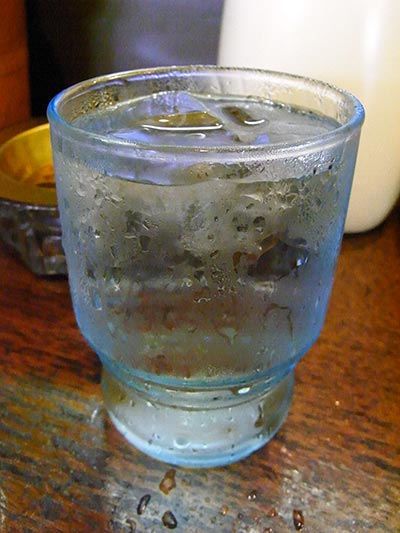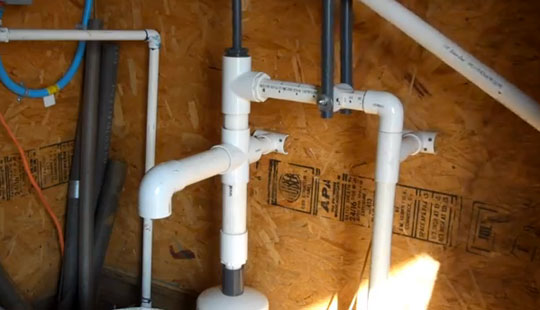Build a Simple PVC Water Well Hand Pump
Building a hand pump for your water well using PVC pipe and fittings is a practical and cost-effective solution for accessing water when electricity is unavailable. This article will guide you through the parts required, along with tips to ensure your pump operates efficiently. Whether you’re preparing for emergencies or creating a backup water source, this simple setup can be made with easy-to-find materials.
Below is a detailed list of parts you’ll need to assemble the hand pump. It complements the schematic diagram provided in the linked video from Great Lakes Prepping, which showcases how to build a PVC hand pump step by step.
Parts List
- A. 1-inch PVC Schedule 40 Pipe – This will form the primary body of the pump, acting as the conduit through which water is drawn.
- B. 3/4-inch PVC Schedule 40 Pipe – Used for internal components where smaller diameter piping is required for smoother flow and fitting inside larger pipes.
- C. 1 1/4-inch PVC Schedule 40 Pipe – The outer casing that houses the entire assembly, offering strength and protection.
- D. 1-inch Cap – A PVC cap that seals the end of the 1-inch pipe, preventing water from escaping and ensuring pressure builds up inside the system.
- E. 1 1/4 X 3/4 Sch. 80 Adapter – This heavy-duty adapter connects different pipe sizes and provides a robust, durable connection.
- F. 1 1/4-inch Coupling, Collar, Sch. 40 – A coupling component that links sections of the 1 1/4-inch PVC pipe, ensuring watertight connections.
- G. 3/4-inch Slip Glue Joint to External Thread, Sch. 40 – A fitting used to connect threaded components with glued joints for secure assembly.
- H. 3/4-inch Slip Glue Joint to Internal Thread, Sch. 40 – Another versatile fitting that helps connect internally threaded pieces with glued joints.
- I. 3/4 X 3/8 Bushing Adapter, Sch. 80 – This reducer bushing helps transition between different pipe diameters. Be sure to buy this part before selecting the stainless steel ball, as manufacturing variations exist.
- J. 3/4-inch Diameter Stainless Steel Ball (Type 316, Grade 100) – The ball serves as a key valve mechanism. It must seal against the bushing but move freely to allow water flow without sticking.
- K. 5/32 or 3/16-inch Diameter PVC Welding Rod – Used as a retainer to hold the stainless steel ball in place. It ensures that the ball can only move within a limited range, which is essential for fast valve action.

Important Assembly Tips
- Choose the Right Stainless Steel Ball: The size of the ball is crucial for the proper function of the hand pump. It must fit snugly in the bushing but move freely. Measure the ball seat opening in the bushing adapter (Part I) before purchasing the ball to ensure compatibility.
- Ball Retainer: The PVC welding rod (Part K) acts as a ball retainer, limiting the movement of the stainless steel ball to around 3/4 inch. This keeps the ball close to the valve seat and allows for faster valve action, making the pump more efficient.
- Avoid Oversized Balls: Do not use a ball larger than 3/4 inch diameter inside a 1-inch PVC Schedule 40 pipe. The ball must be small enough to release easily but large enough to seal the opening effectively.
Where to Source the Parts
- Stainless Steel Balls: Look for stainless steel balls online or at local hardware stores. Great Lakes Prepping provides a direct link in their video for where to buy these specific balls.
- PVC Welding Rod: This specialized rod can be found at industrial suppliers like US Plastic.
Watch the Video for a Step-by-Step Guide
Great Lakes Prepping has an informative video that demonstrates the entire construction process of the PVC hand pump. I highly recommend watching it to get a visual understanding of the assembly. Below is the video, along with links to download the schematic diagram and printable parts list they provided.
By following these instructions and gathering the necessary parts, you’ll be able to build a reliable hand pump for your well. This setup can be a lifesaver in off-grid situations, ensuring you have access to water without the need for electricity.
Stay prepared and resourceful!
 Home and Gardening Ideas At home and Gardening ideas we believe inspiring readers about homesteading, self sufficiency
Home and Gardening Ideas At home and Gardening ideas we believe inspiring readers about homesteading, self sufficiency







How deep of a well can you pump out of using this PVC pump?